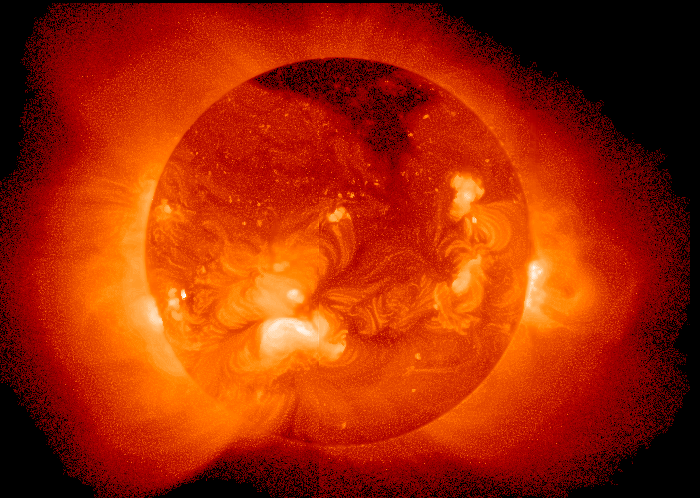Research Projects
Atomic physics
Atomic physics plays a key role in astrophysics as astronomers' only information about a particular object comes through the light that it emits, and this light arises through atomic transitions. The group is involved in the Iron Project and the UK APAP Network . The goal of this project is to compute, on a large scale, electron excitation cross sections and rates of astrophysical and technological importance, using the most reliable procedures currently available. Over the period 2006--2010, we have published over 100 refereed APAP publications. APAP has become the main atomic data provider for research in fusion (see ADAS , and astrophysics (see,e.g. APEC, ATOMDB, CHIANTI, CLOUDY, ION, XSTAR, XSPEC, MOCASSIN).
Atomic databases
This group has played a key role
in developing and maintaining CHIANTI,
a Database for Astrophysical Emission Line Spectroscopy.
CHIANTI is now the reference atomic database and modelling code
in stellar coronal physics, with over 2000 direct citations.
It is universally used in solar physics, but now widely-used also to
interpret astrophysical plasma, to estimate radiative losses in hydrodynamical
or MHD modelling, and for forward modelling.
CHIANTI received the 2010 RAS group achievement award for geophysics.
We have also been part of a large EU FP7 project called
Virtual Atomic and Molecular Data Centre
(VAMDC) , the main source of atomic and
molecular data for academic and industrial communities.
Solar spectroscopy
 The main astronomical body that we study is the Sun and, in particular, the hot atmosphere of the Sun called the corona.
The best parts of the electromagnetic spectrum to study the corona are the extreme ultraviolet (EUV) and X-rays.
The EUV is an excellent region to perform spectroscopy and a lot of effort has been devoted in analysing and
interpreting solar spectra from the Solar and
Heliospheric Observatory (SOHO) instruments, principally the
Coronal Diagnostic Spectrometer (CDS) and
Extreme-ultraviolet Imaging Spectrometer (EIS)
aboard the Japanese/UK/USA mission HINODE,
formerly known as SOLAR-B. As part of the Hinode/EIS team, we received in 2015 the RAS group achievement award.
The main astronomical body that we study is the Sun and, in particular, the hot atmosphere of the Sun called the corona.
The best parts of the electromagnetic spectrum to study the corona are the extreme ultraviolet (EUV) and X-rays.
The EUV is an excellent region to perform spectroscopy and a lot of effort has been devoted in analysing and
interpreting solar spectra from the Solar and
Heliospheric Observatory (SOHO) instruments, principally the
Coronal Diagnostic Spectrometer (CDS) and
Extreme-ultraviolet Imaging Spectrometer (EIS)
aboard the Japanese/UK/USA mission HINODE,
formerly known as SOLAR-B. As part of the Hinode/EIS team, we received in 2015 the RAS group achievement award.
Since 2013 we have been involved in the analysis of UV spectra from the IRIS mission.
We are also involved in future space missions, in particular Solar Orbiter and its remote-sensing instruments. Del Zanna is co-I/Associated scientist on METIS (coronograph), EUI (EUV imager), and SPICE (VUV spectrometer).
Del Zanna and Mason are co-I of MaGIXS (approved in 2015), which will provide the first high-resolution slit spectroscopy in the X-rays (6-25 A). A prototype will be flown in 2018 on a sounding rocket and will provide breakthrough measurements on the high-temperature heating in active regions, its variability and its chemical composition.
- ©DAMTP, Centre of Mathematical Sciences, Wilberforce Road, Cambridge CB3 0WA
Page last updated: 11 Jan 2016, G. Del Zanna - Privacy
- Accessibility
